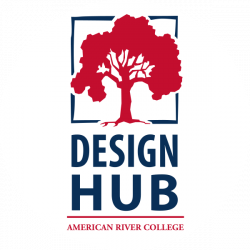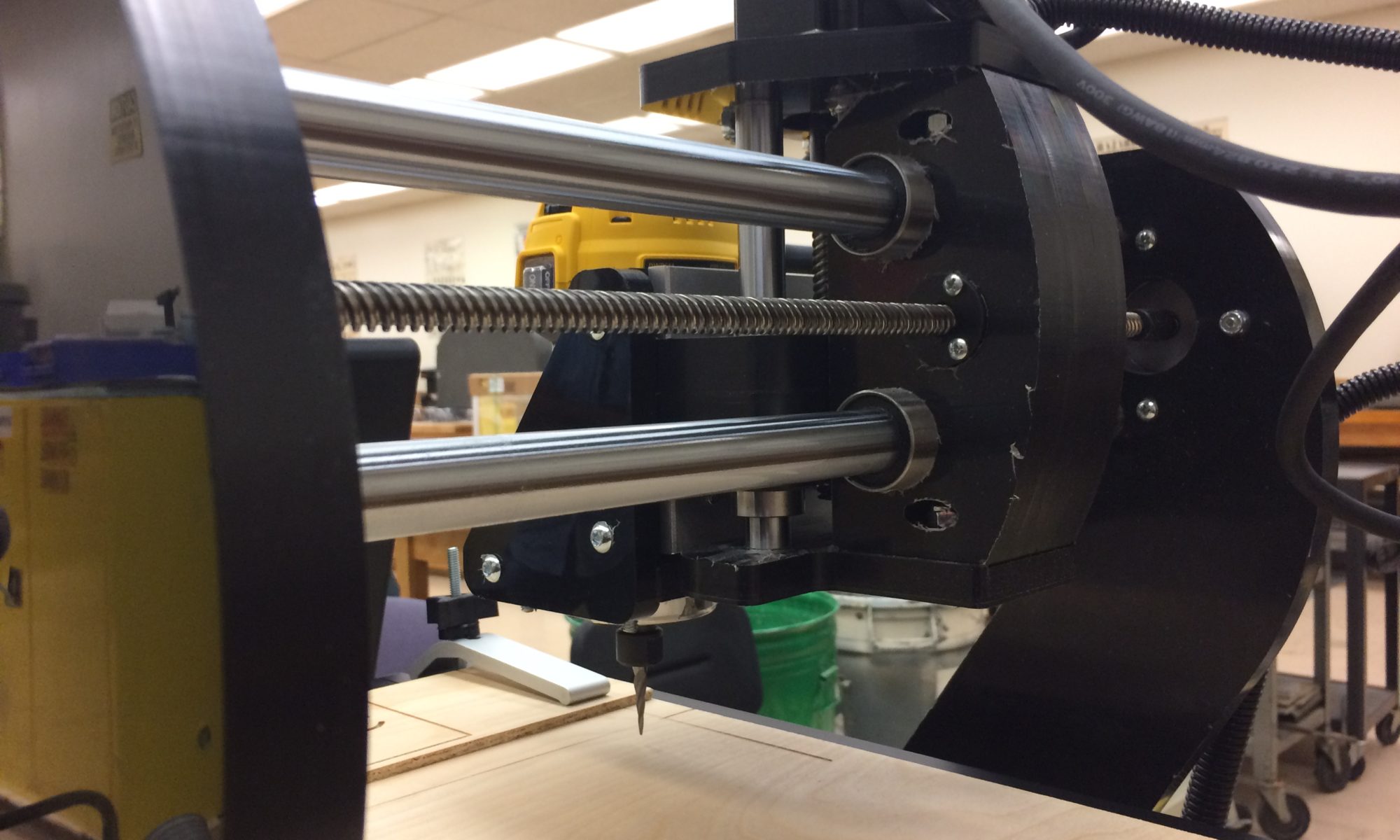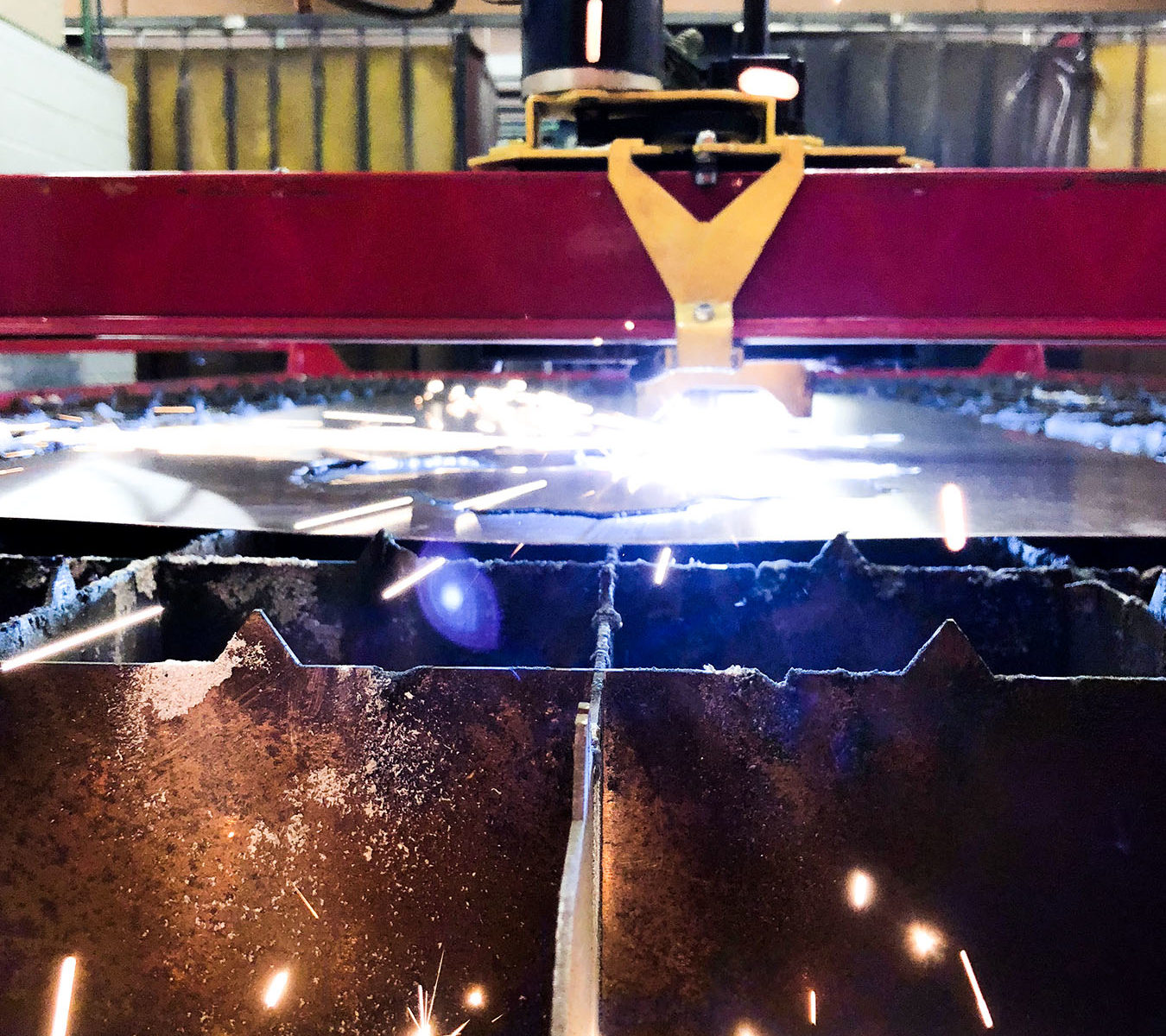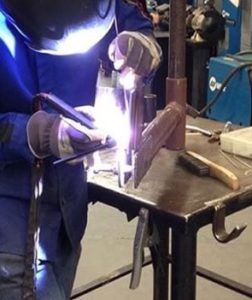 Design Hub student Shayn found inspiration in his teacher’s words: “You just gotta do it!” Quoted from none other than the welding professor here at ARC, Chris Messier. “When he’s not teaching his students all he knows, he’s creating vacuum chambers with gloved hands and sheet metal. He is pictured giving an example of the TIG- or GTAW- welding process, something that is proven to be a pretty tricky task. Shayn tells us that he is taking his fabrication and blueprints reading class in the welding department at ARC. As Shayn explains this process, he gives us a piece of welding slang: “stacking dimes”, which is the process of getting the weld to look like dimes that have been melted on top of each other. “It’s actually the sign of a job well done,” Says Shayn. Seeing students inspired by their professors is always a great thing to see. Teachers leave not only an impression on the students, but on the campus community of makers, including those here at the Design Hub. Thank you Chris Messier for all that you do, and thanks to Shayn for sharing! More of Professor Messier’s work can be found on his instagram page: @mez_welds
Design Hub student Shayn found inspiration in his teacher’s words: “You just gotta do it!” Quoted from none other than the welding professor here at ARC, Chris Messier. “When he’s not teaching his students all he knows, he’s creating vacuum chambers with gloved hands and sheet metal. He is pictured giving an example of the TIG- or GTAW- welding process, something that is proven to be a pretty tricky task. Shayn tells us that he is taking his fabrication and blueprints reading class in the welding department at ARC. As Shayn explains this process, he gives us a piece of welding slang: “stacking dimes”, which is the process of getting the weld to look like dimes that have been melted on top of each other. “It’s actually the sign of a job well done,” Says Shayn. Seeing students inspired by their professors is always a great thing to see. Teachers leave not only an impression on the students, but on the campus community of makers, including those here at the Design Hub. Thank you Chris Messier for all that you do, and thanks to Shayn for sharing! More of Professor Messier’s work can be found on his instagram page: @mez_welds
CNC Router
The CNC Router interns gave a tour around their machine in the back room of the Design Lab Room 311. The router was being tested first to make sure that it works properly before executing the projects. It is being tested on plywood.
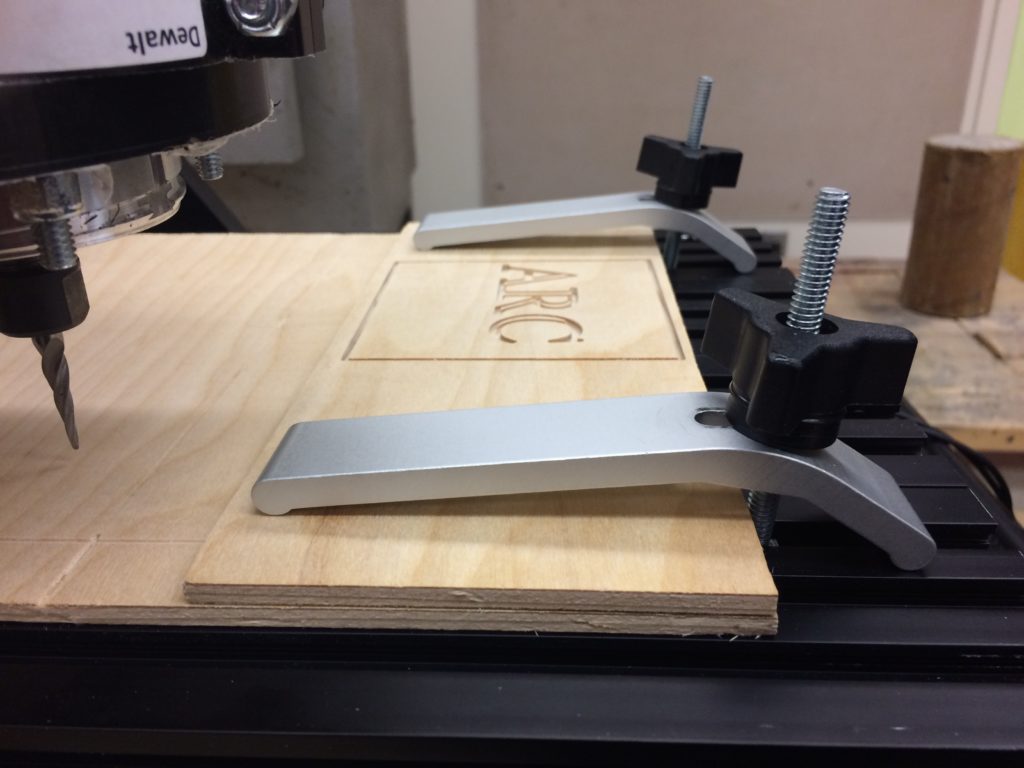
This particular project on the CNC Router is the letters, “ARC” being drilled into the wood as a test before other, more complex images are carved into the wood. After the initial testing takes place with just the letters, “ARC,” then the router interns will move on to further advanced projects such as carving out detailed photographs.
To do this, first the intern must use the software, V Curve, to upload, design, and save the file onto the computer. Then load the image to the CNC control panel which will command it to cut into the wood. Home on the CNC Router control panel tells it where to start cutting. The interns can actually set how far deep they want to cut into the wood also at the home button on the control panel. Randy ordered the CNC Router interns to test out this machine to prepare it for further use later on for more projects. There is an ongoing series of projects using the CNC Router throughout the semester. It can be viewed in the Design Lab, where some of the beautiful woodwork is displayed. This particular project of engraving a family photo from an image on the computer screen to a piece of plywood is especially meaningful for people who want pictures to last longer than they would on paper. It’s a special way of remembering those we cherish, because one can have the gorgeous frame with them for life.
Sparks are Flying at ARC’s Design Hub
Thanks to the welding department, Allen Peterson III, one of our amazing Mechanical Engineer students with a background in welding, has been working on the Sign Production Project.
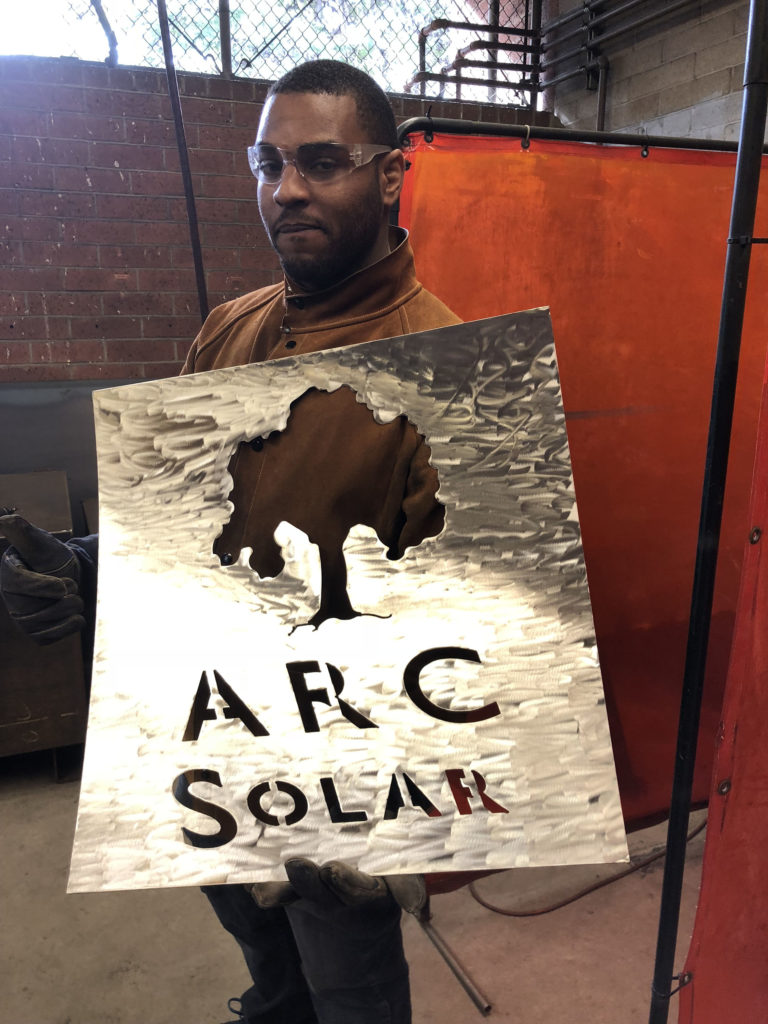
Using the Plasma CNC Cutter, he has been creating signs on Stainless steel sheet metal for use around campus to allow students to better recognize the locations/identify different departments. How the signs will be displayed is still to be determined, but they will soon be seen on the doors, walls or displays around campus very soon.
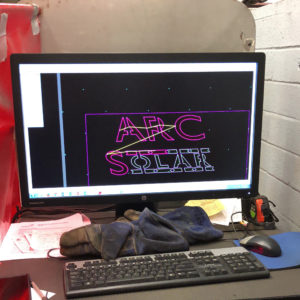 We took a closer look into the process of making these signs. Needless to say, there are a lot of steps and close attention to detail that is involved. First, our intern Allen has to align the Plasma Cutter with the sheet of metal through coordinates on the computer. After aligning the Cutter, a font must be picked and placed within the coordinates to determine where they will be cut on the metal.
We took a closer look into the process of making these signs. Needless to say, there are a lot of steps and close attention to detail that is involved. First, our intern Allen has to align the Plasma Cutter with the sheet of metal through coordinates on the computer. After aligning the Cutter, a font must be picked and placed within the coordinates to determine where they will be cut on the metal.
Then comes the fun part. As the metal is being cut, a spectacle of sparks light up the workspace. It is something hypnotic to behold, as the image is slowly made visible through the spark showers of the plasma cutter.
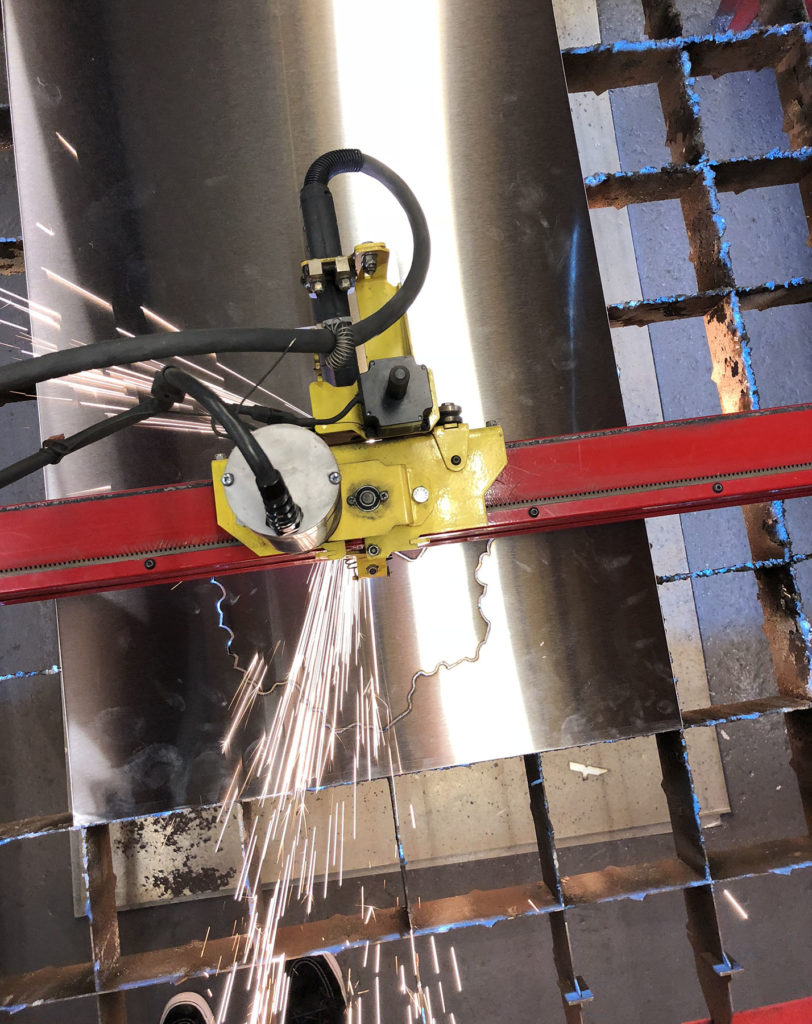
After the metal is cut, Allen used a grinder to create the nice finish that we see on the sign. The new, eye-catching difference in the texture of the metal is something worth marveling at.
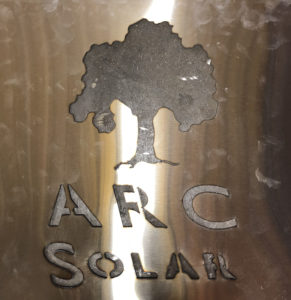
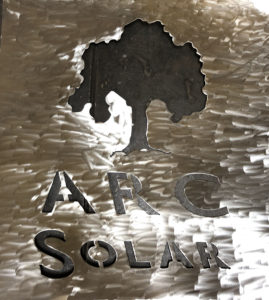
The departments that have had signs made for them include our Physics, Engineering, Solar, Early Child Development, Chemistry, Biology, and Design Tech departments. The goal is to have easily recognizable campus departments, while at the same time beautifying our school. At the Design Hub, we are eager to help make our campus a better place. We utilize our student’s talents so they can be the force that helps benefit our campus life, and we can be the force that helps them gain the experience using this incredible machinery to eventually enter the workforce.

